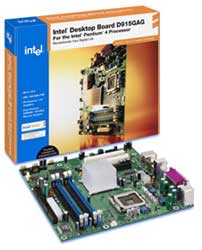 The motherboard is a crucial component in a PC. If you have a low-quality motherboard, your computer will frequently run into issues, making it “frustrating” to identify the cause and fix the problems.
The motherboard is a crucial component in a PC. If you have a low-quality motherboard, your computer will frequently run into issues, making it “frustrating” to identify the cause and fix the problems.
Therefore, choosing a high-quality motherboard that fits your budget while providing excellent performance and allowing for future upgrades can be quite challenging. For this reason, VietNamNet shares tips to help you select a good-quality motherboard that is suitable for your needs.
First of all, when choosing a motherboard, you need to pay attention to the following components:
Chipset
Why should you pay attention to the chipset first when choosing a motherboard? The chipset in the motherboard plays an essential role. It transfers data from the hard drive to the memory and then to the CPU, ensuring that peripheral devices and expansion cards can “communicate” with the CPU and other devices. Motherboard manufacturers also include additional features in the chipset, such as RAID control and FireWire ports in each motherboard series.
Moreover, the chipset not only limits the type and speed of the CPU that the motherboard can support but also determines the type of memory you can install and adds other functions like integrated graphics, audio, and USB 2.0 ports. Generally, motherboards designed for the same type of chipset have similar features and performance. Therefore, the chipset is a crucial factor when purchasing a motherboard.
CPU
Which processors does your motherboard support? Currently, Intel’s Pentium 4 and AMD’s Athlon represent two different trends in CPU selection. The socket standard for AMD and Intel processors differs, so you cannot insert a processor from one brand into a motherboard that supports the other. AMD currently uses sockets 939 and 754, while Intel CPUs use sockets 775 and 478. Furthermore, processors from the same brand also utilize different sockets, which can limit upgrade options. Another factor is the maximum supported CPU speed that the motherboard can handle. You need to ask the seller about the CPU speed supported by the motherboard because sometimes manufacturers claim high CPU speed support that is never actually achieved. For example, a motherboard may state it supports CPU speeds up to 2.5 GHz, but in reality, it only supports a maximum of 2.0 GHz.
Recently, the processor technology has seen significant advancements with trends towards 64-bit processors and multi-core processors. These high-end processors are quite expensive, and most software on the market currently does not support these features, so the benefits provided by these processors may not be substantial. Therefore, unless you are a tech enthusiast, a professional gamer, or a graphics expert, using a Pentium 4 or Athlon should be sufficient.
RAM (Random Access Memory)
Most modern motherboards support DDR RAM (Double Data Rate RAM), while RDRAM (Rambus RAM) is not commonly used due to its high cost. Additionally, DDR2 has emerged on the market, offering speeds comparable to RDRAM but at prices similar to DDR. DDR RAM is available in speeds of 200/266/333/400, while DDR2 supports speeds of 400/533/667. Furthermore, DDR also supports dual-channel, allowing for faster memory access and improved performance.
Graphics Card
The graphics field is always a focus for manufacturers. New motherboards support graphics cards via PCI Express x16 or integrated graphics. Integrated graphics chips do not offer high graphics performance and are suitable only for home and office users. However, some integrated graphics chips from Nvidia, ATI, or Intel 915G/945G are of very good quality.
In terms of graphics, the AGP interface has been replaced by PCI Express, which has double the bandwidth of AGP 8x. Additionally, dual graphics card technology SLI provides “superior” graphics processing capabilities. SLI allows you to install two graphics cards on the motherboard, typically delivering graphics performance that is 70-80% higher than normal. However, these are high-end technologies, and a pair of average graphics cards can cost several hundred USD.
Audio
Motherboards with integrated audio can be a better choice. Motherboards with six-channel audio chipsets are often suitable for gaming or MP3 playback. However, some high-end motherboards can support 8-channel audio (7.1) and also offer additional digital audio (SPDIF) optical/coaxial outputs. If you desire high-quality audio, you might consider purchasing a high-quality sound card such as the Creative Sound Blaster Live 24-bit. In that case, you can disable the integrated sound using jumpers or simply configure it in the BIOS.
Storage
Most modern motherboards support ATA/100 or ATA 133, and recently, many motherboards support SATA. SATA has a high bandwidth of up to 150 MB/s. Moreover, SATA supports hot-swapping, and the smaller, more compact connection cables save space within the computer case. Beyond that, SATA II has emerged with a bandwidth of 300 MB/s, double that of SATA.
Motherboards with integrated IDE RAID can be an attractive option. A RAID system for personal computers uses a pair of identical hard drives to enhance performance (by writing data to both drives) or provide a backup solution in case of a hard drive failure (disk mirroring). The RAID controller option is not expensive, as motherboards supporting RAID only increase the cost by about $8.
Connectivity
Most modern motherboards support Ethernet, USB 2.0, and FireWire ports. Older interfaces such as PS/2 and parallel ports are gradually “disappearing.” Additionally, some other expansion interfaces such as wireless networking, Gigabit networking, Bluetooth, and card readers may also be supported.
Accessories
Diagnostic LEDs, system monitoring clocks, power buttons, computer reset buttons, BIOS reset, and backup BIOS options are among the accessories included. Additionally, manufacturers may offer various utilities and accompanying software to enhance usability, processing capabilities, stability, and system backup and recovery.
In some situations, you cannot purchase a motherboard without also buying a CPU and RAM. You need to consider the price and performance of the motherboard before making a purchasing decision. Below is a classification of motherboards based on price and features:
|
FeaturesConfiguration
Advice for Buying a Motherboard Research Chipsets At any time, motherboard suppliers offer motherboards with several different chipsets. Major chipset manufacturers include Intel, Via, Sis, and NVidia. Typically, chipsets are divided into two main types: one supports AMD processors, while the other supports Intel’s Pentium processors. The distinction between chipsets also includes memory support, bus speed, and integrated devices like graphics and audio. Because many motherboard manufacturers often use the same chipset types, you can easily distinguish motherboards based on their chipset. Don’t Buy the Fastest Processor You will spend a lot of money just to buy the highest speed processor. However, if you purchase a processor that is slightly slower, it can be significantly cheaper, and the most expensive processor may not necessarily offer a substantial speed advantage. Buy the Fastest Memory Supported by Your Motherboard However, the performance difference among these memory types may not be substantial, but one thing is certain: when you need to upgrade your memory, the fastest memory type will always be easier to find. Be Cautious with Integrated Graphics Drawbacks Chipsets that integrate graphics onto the motherboard often use system memory to store graphics data, which can reduce overall system speed. Some integrated graphics chips from Nvidia and ATI may perform well, but it’s best not to rely on integrated chips or cheap graphics cards. If you plan to upgrade in the future, it’s advisable to buy a motherboard with AGP slots or, more recently, PCI Express slots. Spend a Little More By spending just an additional 20 USD when purchasing your motherboard, you can gain new technologies integrated such as RAID, LAN, USB 2.0, and possibly even FireWire ports. These features may not be immediately necessary, but they will be essential later. Furthermore, you will save a PCI slot for future upgrades. Minh Phuc Leave a Reply | ||||||||||||||||||||||||||||||||||||||


















































